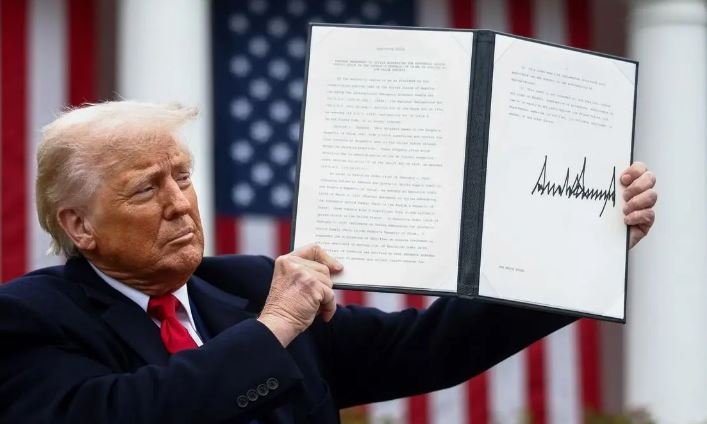U.S. Imposes Highest-Ever Tariff on Indian Exports Over Russian Oil Purchases, Triggering Trade Tensions
Trump Administration Singles Out India with 50% Tariff, Escalating Economic Pressure Ahead of Key Trade Talks
WASHINGTON/NEW DELHI, AUGUST 6: In a sharp escalation of trade tensions, U.S. President Donald Trump has imposed an additional 25 percent tariff on Indian exports to the United States, taking the total import duty to 50 percent for most goods. The punitive measure, enacted through an executive order titled “Addressing Threats to the U.S. by the Government of the Russian Federation,” specifically targets India for its continued purchase of Russian oil, setting a precedent as no other country has faced such a steep penalty for similar actions.
The order, signed late Tuesday, will come into effect in two phases: the existing 25 percent levy applies from August 7, while the newly added 25 percent surcharge will begin 21 days later, on August 27. The action comes despite ongoing trade negotiations between India and the U.S., with the next round of bilateral talks scheduled for August 25 in New Delhi.
In a strongly worded response, India’s Ministry of External Affairs condemned the move as “unfair, unjustified, and unreasonable” and confirmed that it would take “all necessary steps to safeguard national interest.” Trade officials and exporters alike view the announcement as a blunt pressure tactic by Washington to influence outcomes in the upcoming trade negotiations, particularly with the U.S. pushing for greater access in sectors like automobiles, dairy, wine, petrochemicals, and genetically modified crops.
India’s exposure to these tariffs is significant. The U.S. is India’s largest export market, accounting for goods worth $86.5 billion in 2024-25 out of a total bilateral trade of $131.8 billion. Nearly 55 percent of India’s exports to the U.S. are now expected to be directly impacted by the elevated duties. Exporters warn that key industries such as textiles, garments, gems and jewellery, marine products like shrimp, leather, footwear, machinery, and chemicals could face an immediate and severe slowdown.
In contrast to India, other nations such as China and Turkey have been spared the brunt of this policy, with the U.S. imposing a 30 percent tariff on Chinese goods and 15 percent on Turkish imports. India now joins Brazil as the country facing the highest U.S. tariff rate at 50 percent, placing its exporters at a distinct disadvantage compared to peers such as Myanmar (40%), Bangladesh (35%), Indonesia (32%), and Vietnam (20%).
The U.S. justification rests on India’s growing imports of discounted Russian oil, which have surged in recent years. While Russian crude accounted for a mere 0.2 percent of Indian oil imports before 2021, Western sanctions on Moscow led to a reconfiguration of global supply chains. Indian refiners, aiming to manage fuel costs, ramped up purchases from Russia, which has since become India’s largest oil supplier, contributing 1.6 million barrels per day out of the country’s total 5 million barrels of daily imports.
Though the order spares pharmaceuticals, crude oil, gas, electricity, critical minerals, and key electronics like smartphones and semiconductors from the additional duty, the sectors impacted represent a significant share of India’s export base.
Ajay Sahai, Director General of the Federation of Indian Export Organisations (FIEO), called the move “extremely shocking” and warned that the repercussions would be felt widely across India’s trade-dependent industries. “This will impact over half of our exports to the U.S.,” he said, adding that the timing, just weeks before a critical round of trade talks, raises serious concerns about the intent behind the measure.
As both nations aim to conclude the first phase of a long-pending bilateral trade agreement by fall this year, this tariff hike has cast a shadow on the negotiations. Analysts say it will test not just the resilience of India’s export economy but also the diplomatic equilibrium in what remains one of the most strategically significant bilateral relationships.




